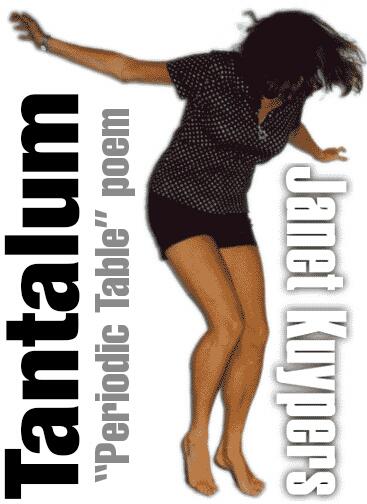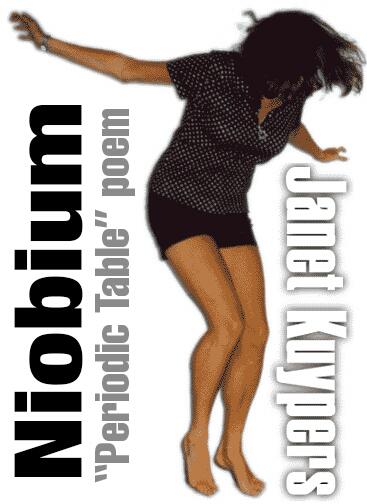Tantalum
a href=”http://www.janetkuypers.com” target=”new”>Janet Kuypers

from the “Periodic Table of Poetry” series (#73, Ta)
(with references to the poem “High Roller”)
11/14/13
People expected
to see me around.
I couldn’t be a recluse.
So I got out my camera
and kept myself
hidden to the world
by separating myself
with a camera lens.
But I longed to see you
sitting again,
cigarette in hand…
I wanted to be able to
walk up behind you,
rest my hands
on your shoulder,
lean my head
next to your face.
I longed to have
my cheek near yours,
not touching,
but so close —
so close that I could
still feel the warmth
from your presence.
But wasn’t I doing that
when I tried to
take pictures instead.
So I then kept myself hidden.
I’ve been a recluse.
Just sat at home
and played video games
so I wouldn’t have to
think about you.
How did I know
you’d work your way
into my shell at home.
I vowed to never
call you again,
you tantalize me so,
but I’d have to remove
every cell phone
I’ve ever used…
You worked your way
into every small crevasse
in my modern world,
and still,
you never cracked
under any pressure
I ever gave you.
It made you
the strong silent type,
you always seemed hidden,
but still so influential.
I should know,
i’m finding everything
that leads me to you
when I try to escape you
in our technology
inundated existence.
#
I call you tantalizing,
and I think of Tantalus,
a king in Greek mythology —
after king Tantalus
stole secrets from the Gods,
he was forced to stand
in a pool of water
that flowed away from him
whenever he tried to drink.
Kind of like you,
how I seem to need you so,
but how we just
never
seem to mix.

